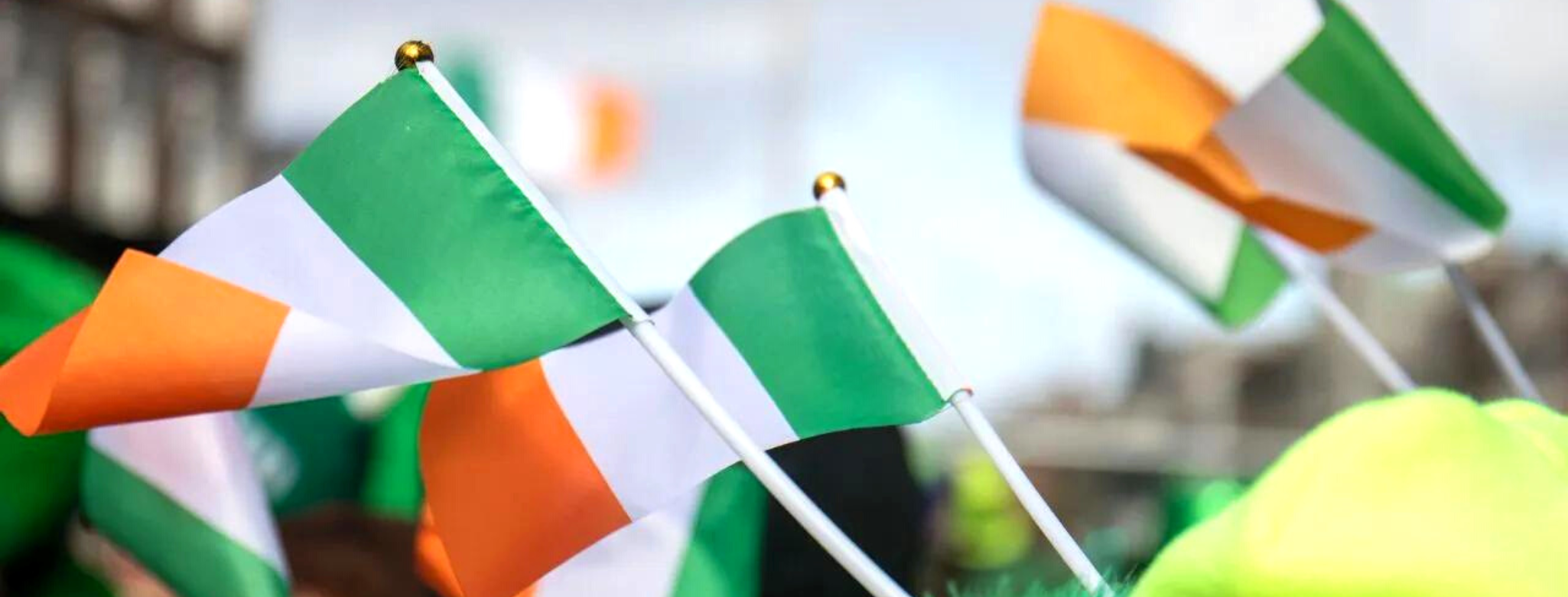The History, Meaning, and Traditions of St. Patrick's Day: Part 2
Posted by Hayley Adams on Mar 9th 2023
“The white in the center signifies a lasting truce between the orange and the green, and I trust that beneath its folds the hands of the Irish Protestant and the Irish Catholic may be clasped, in generous and heroic brotherhood.” -Thomas Francis Meagher
Last week, in Part 1, we explored the origins of St. Patricks Day and took a look at the very first celebrations and how they came about. Now let's dive into the history and meaning of the widely known green, white, and orange, Irish flag. Where did the flag come from? What do the colors stand for?
The Irish Flag
The modern day green, white, and orange tricolor flag was originally used by the Easter Rising rebels in 1916. It was then chosen to represent the Irish Republic during the War of Independence between 1919 and 1921. It wasn’t until 1937 that it was given official status during the Constitution of Ireland.
The tricolor was first flown by Thomas Francis Meagher, then a leader of the Young Irelander movement, who would go down in history as Brigadier General Thomas Francis Meagher of the Union Army during the American Civil War.
Over the Years
While the tricolor had gained traction as a symbol for Ireland, the primary flag of Ireland was green with a harp in the center. It is believed that that flag was used as early as the 1640’s.
When the tricolor was introduced to Ireland both flags were flown above the GPO, which was the headquarters of the Easter Rising rebels, but the tricolor quickly became more widely accepted and is the flag that we all know today!
The Meaning Behind the Colors
The green in the flag symbolizes Irish republicanism dating back to the Society of United Irishmen in the 1790s.The orange in the flag represents the Protestant minority in Ireland. It was included in the Irish flag in an attempt to make Irish Protestants feel included in the Irish independence movement. The white was placed between the two colors for a very specific reason, the white represents lasting peace between the two and the understanding of accepting and respecting each side.
Today, thousands of flags are flown and waived each each to help celebrate Ireland's culture and history in parades, parties, gatherings, and more!
Part 3
Follow us into part 3 of our St. Patricks Day series to learn more about the traditions of St. Patrick’s Day and how they became a staple in the holiday that we know and love today!

